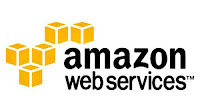The need for speed… illusion or reality?
Almost any professional in
any reputable military organisation around the world will understand the need to be focused,
centred and balanced in often-chaotic situations. This is where the term “slow
is smooth, smooth is fast” comes from.
We civilians don’t dodge bullets for a
living yet live in a world that seems to be going faster and faster with no end
in sight! A mind blowing thought if there ever was one! So, to my opening
statement, if the professional soldier can slow down ‘his world’ in order to be
focused, centred and effective, when why can’t we?
Reality… reality… reality!!! It’s the same
yet so different for each and every one of us! My parents never understood
computers, my grandparents never truly understood the motorcar and my great
grandparents never understood… well I think you get my point about the
relativity of our time. It defines our reality and the context of our ability
to “keep up!” We don’t become overwhelmed because our relative world is too
fast. I submit we are overwhelmed because we have become disconnected with what
has always mattered in our world and in our lives!
There are a number of things at play that
can ruin brilliant people and propel others of more mediocre standing to the
stars. In my own analysis of this problem, I can advise the following as a
process in approaching this issue, which can positively impact health, job and
personal life like no other:
Acceptance
- Paradigm of
Existence – Starting at the basics, if we accept
that technology and how the world works is relative to our past, not a replica
of it, then we can remove expectations that inhibit us. If we accept the world
for what it is, not what we think it should be, we can then start thinking
about influencing it for the better.
Inner
Struggle - We
think therefore we are – We should never forget that we exist
in this world as whole beings with the potential within us to be inherently
good and thus truly happy. In order to find ourselves, we need to resolve the
inner conflict, which arises from over focus on materialism and counter
productive societal pressures. Be whole; be assertive and understand true
learning comes from the journey, not the destination!
Clarity
of Vision - Accept
fast, think you! -
The best quality of thought comes from finding a pace that hits a balance
between slow and fast for you! Many will pressure for faster returns, better
this, quicker that, but the reality is that your qualitative brilliance comes
in balance, not under the mire of transferred anxiety from seniors who really
should know better! Accept it for what it is and you will see a path through
life that is aligned to you. If your
life path goes in a different direction, then I recommend you follow it for
your journey is yours to own.
Life
Skills - Manage
your life – Good organisational skills allow us to do more with less and they
are present in successful people over the centuries from Genghis Khan to
Richard Branson! The reason why is clear. We need structure and discipline to
succeed in the world. If we accept the paradigm of our world, we can plan to
engage with it on our terms and within the same time frame, deriving value from
our presence here using the tools of life such as organisational skills,
technology, etc
Know
Yourself - Look
within, for it is where you will find your treasure – Too many people become anxious about themselves and their ability
to succeed as they feel society will not forgive them if they don’t at least
rival their peers with similar performances. This is a dog eat dog fallacy that
inhibits great people from looking within and seeing what area of life
resonates with them to their very bones! Even if such a person ignores that
inner voice saying, “You don’t belong here” and succeeds in climbing the ladder
of life on a career wall; isn’t it a tragedy to reach the top only to find your
ladder is facing the wrong wall?? I think it is, which is why finding ourselves
should precede a career change based on true self-reflection and discovery of
where we belong!
Understanding
- Seek to
understand and you will drive your own destiny – If
you seek understanding, you may not always find pleasantry but will never
surrender to the illness of learnt helplessness! We need to own our present in
order to find a future path to happiness.
The best lessons are learnt in the darkest hours of our lives. Those who
stay strong and balanced will eventually see a brighter day shine for them!
So, with the kernels of Acceptance, Inner Struggle, Clarity of
Vision, Life-Skills, Know yourself and
understanding around for thousands of years, why do these kernels answer
the question of why can’t we keep up? Even in today’s information age of hyper
connectivity, if we become disconnected from our real selves and the real world
around us, what millennium we live in becomes irrelevant as our problem and
solution remains the same. Inner connection to the outer world opens up its
wonders in so many ways; we can walk in the sunshine even when it is raining.
It’s a timeless tale that is delivered to us by life… always has being, always
will be!
Sources/Credits:
Pics;
Credits;















